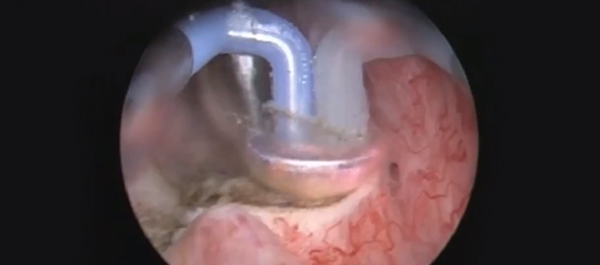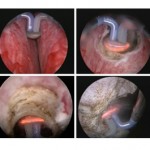Video: Bipolar plasma enucleation vs open prostatectomy
Bipolar plasma enucleation of the prostate vs open prostatectomy in large benign prostatic hyperplasia cases – a medium term, prospective, randomized comparison
Bogdan Geavlete, Florin Stanescu, Catalin Iacoboaie and Petrisor Geavlete
Department of Urology, ‘Saint John’ Emergency Clinical Hospital, Bucharest, Romania
OBJECTIVES
• To evaluate the viability of bipolar plasma enucleation of the prostate (BPEP) by comparison with open transvesical prostatectomy (OP) in cases of large prostates with regard to surgical efficacy and peri-operative morbidity.
• To compare the medium-term follow-up parameters specific for the two methods.
PATIENTS AND METHODS
• A total of 140 benign prostatic hyperplasia (BPH) patients with prostate volume >80 mL, maximum flow rate (Qmax) <10 mL/s and International Prostate Symptom Score (IPSS) >19 were randomized in the two study arms.
• All cases were assessed preoperatively and at 1, 3, 6 and 12 months after surgery by IPSS, Qmax, quality of life score (QoL) and post-voiding residual urinary volume (PVR).
• The prostate volume and prostate specific antigen (PSA) level were measured at 6 and 12 months.
RESULTS
• The BPEP and OP techniques emphasized similar mean operating durations (91.4 vs 87.5 min) and resected tissue weights (108.3 vs 115.4 g).
• The postoperative haematuria rate (2.9% vs 12.9%) as well as the mean haemoglobin drop (1.7 vs 3.1 g/dL), catheterization period (1.5 vs 5.8 days) and hospital stay (2.1 vs 6.9 days) were significantly improved for BPEP.
• Recatheterization for acute urinary retention was more frequent in the OP group (8.6% vs 1.4%), while the rates of early irritative symptoms were similar for BPEP and OP (11.4% vs 7.1%).
• During the follow-up period, no statistically significant difference was determined in terms of IPSS, Qmax, QoL, PVR, PSA level and postoperative prostate volume between the two series.
CONCLUSIONS
• BPEP represents a promising endoscopic approach in large BPH cases, characterized by good surgical efficiency and similar BPH tissue removal capabilities compared with standard transvesical prostatectomy.
• BPEP patients benefited from significantly reduced complications, shorter convalescence and satisfactory follow-up symptom scores and voiding parameters.



